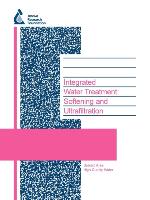Integrated Water Treatment: Softening and Ultrafiltration
BücherAngebote / Angebote:
The biggest impediment for applying membrane processes is fouling from natural organic matter (NOM) and particles. Fouling reduces the flux through membranes, increasing both the capital and operating costs. Softening is traditionally designed to remove hardness ions in hard waters, but it also has the capability to remove particles and organic matter. However, virtually no effort has been directed toward using softening as a pretreatment before membrane processes. This research was designed to fill that gap. The following are highlights from the project: · Organic matter, i.e., natural organic matter or a simple organic component used as a NOM surrogate, is the most detrimental foulant on the membrane process. · Three softening conditions were defined: standard softening (the smallest lime dose to achieve minimum calcium concentration), enhanced softening (the highest lime dose before massive precipitation of magnesium hydroxide), and magnesium softening (the lime dose that precipitates more than 90% of the magnesium. Magnesium softening was capable of dramatically reducing the fouling by all waters tested, but enhanced softening was almost as good for most waters and would generally be sufficient. Softening utilities can use this research to guide their own investigations of softening as a pretreatment for membrane processes. Or they can use the results directly to understand how to operate their existing softening process when considering changing the subsequent solid/liquid separation to ultrafiltration. Originally published by AwwaRF for its subscribers in 2003 This publication can also be purchased and downloaded via Pay Per View on Water Intelligence Online - click on the Pay Per View icon below
Folgt in ca. 15 Arbeitstagen




